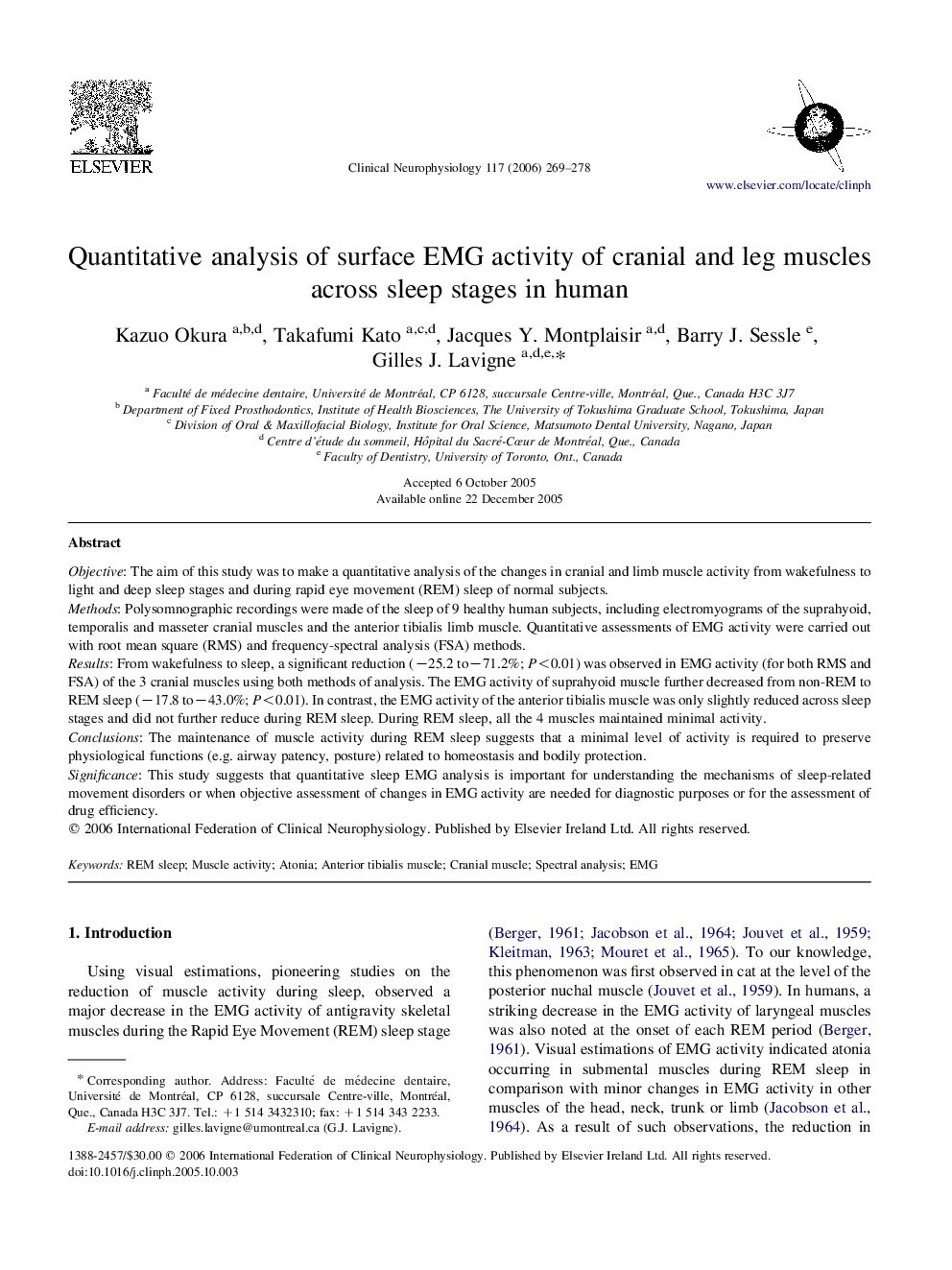| Article ID | Journal | Published Year | Pages | File Type |
|---|---|---|---|---|
| 3048132 | Clinical Neurophysiology | 2006 | 10 Pages |
ObjectiveThe aim of this study was to make a quantitative analysis of the changes in cranial and limb muscle activity from wakefulness to light and deep sleep stages and during rapid eye movement (REM) sleep of normal subjects.MethodsPolysomnographic recordings were made of the sleep of 9 healthy human subjects, including electromyograms of the suprahyoid, temporalis and masseter cranial muscles and the anterior tibialis limb muscle. Quantitative assessments of EMG activity were carried out with root mean square (RMS) and frequency-spectral analysis (FSA) methods.ResultsFrom wakefulness to sleep, a significant reduction (−25.2 to−71.2%; P<0.01) was observed in EMG activity (for both RMS and FSA) of the 3 cranial muscles using both methods of analysis. The EMG activity of suprahyoid muscle further decreased from non-REM to REM sleep (−17.8 to−43.0%; P<0.01). In contrast, the EMG activity of the anterior tibialis muscle was only slightly reduced across sleep stages and did not further reduce during REM sleep. During REM sleep, all the 4 muscles maintained minimal activity.ConclusionsThe maintenance of muscle activity during REM sleep suggests that a minimal level of activity is required to preserve physiological functions (e.g. airway patency, posture) related to homeostasis and bodily protection.SignificanceThis study suggests that quantitative sleep EMG analysis is important for understanding the mechanisms of sleep-related movement disorders or when objective assessment of changes in EMG activity are needed for diagnostic purposes or for the assessment of drug efficiency.
